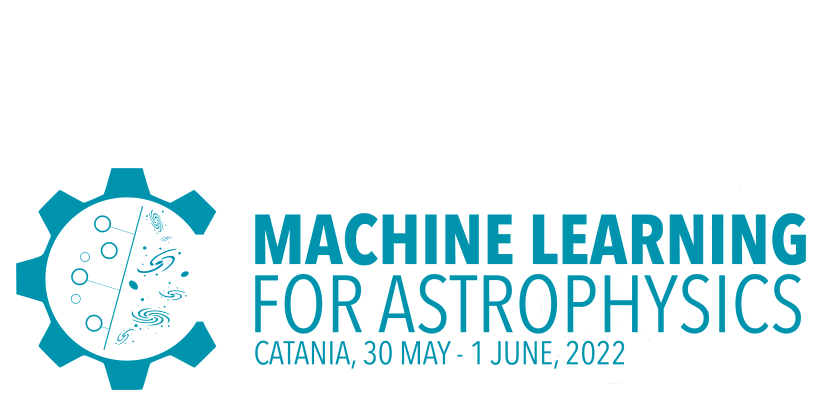Speaker
Description
ANTARES, the first large undersea neutrino telescope, has recently stopped taking data after nearly 16 years of operation. ANTARES consisted of 12 vertical lines forming a 3D array of photo-sensors, instrumenting about 10 megatons of Mediterranean seawater to detect Cherenkov light induced by secondary particles from neutrino interactions.
The event reconstruction and background discrimination is challenging. Here, we present a method based on deep learning aimed to improve the direction reconstruction of low-energy single-line events, for which the reconstruction of the azimuth angle of the incoming neutrino is particularly difficult. Our results show a promising improvement in resolution over former reconstruction techniques, at least doubling our sensitivity in the low energy range, which is highly relevant for dark matter searches and other physics studies.
The network was trained with Monte Carlo simulations of track-like events: (anti)muon-neutrino interactions. The dataset was randomly divided in three parts: training, validation (to avoid overfitting through early stopping), and test (to evaluate the generality of the results). The architecture of the neural network combined the properties of Deep Convolutional Networks (DCNs) with those of Mixture Density Networks (MDNs): the convolutional layers made the initial processing of the inputs, whereas using MDNs in the output layer allowed predicting not only the direction angles but also their uncertainty. Results of the deep neural network on the test set showed a mean deviation upon the true value of 7.4° for the zenith angle reconstruction, in contrast to 15.5° using former methods. We also computed the estimation of the azimuth angle, which was missing previously for single-line events due to low precision. The results of (i) randomized, and (ii) date-sorted, K-fold cross-validation (with k=5) confirmed the validity and robustness of the approach.
To confirm the viability of the tool in real data analyses, we ran additional tests with simulated data of different sorts. First, we checked the behavior against background noise. As input, we used information from a random single line other than that of the single-line event. As expected, predictions showed a large deviation from the true value in the Monte Carlo simulation. More importantly, this test confirmed the generality of the uncertainty output reflecting the precision of predictions. Second, different types of simulated events, atmospheric muons and shower events, were tested. We confirmed accurate predictions for their direction and uncertainty, despite these events were not explicitly trained. Moreover, these results showed the power of the method in discriminating muon-related events into two subtypes based on direction criteria: muons originated from up-going neutrinos crossing the Earth vs. down-going muons directly detected after they cross the atmosphere. Finally, we checked that zenith and azimuth distributions, and their uncertainties, were in good agreement with those from real data events, especially when cutoffs based on quality parameters were applied. Thus, we conclude that this method is ready to be applied in physics analyses.
| Main Topic | Classification and regression |
|---|---|
| Secondary Topic | Deep learning |
| Participation mode | In person |

